
Rediscovering Japan
Travel (Iwate (Part 1))

by tomizuta
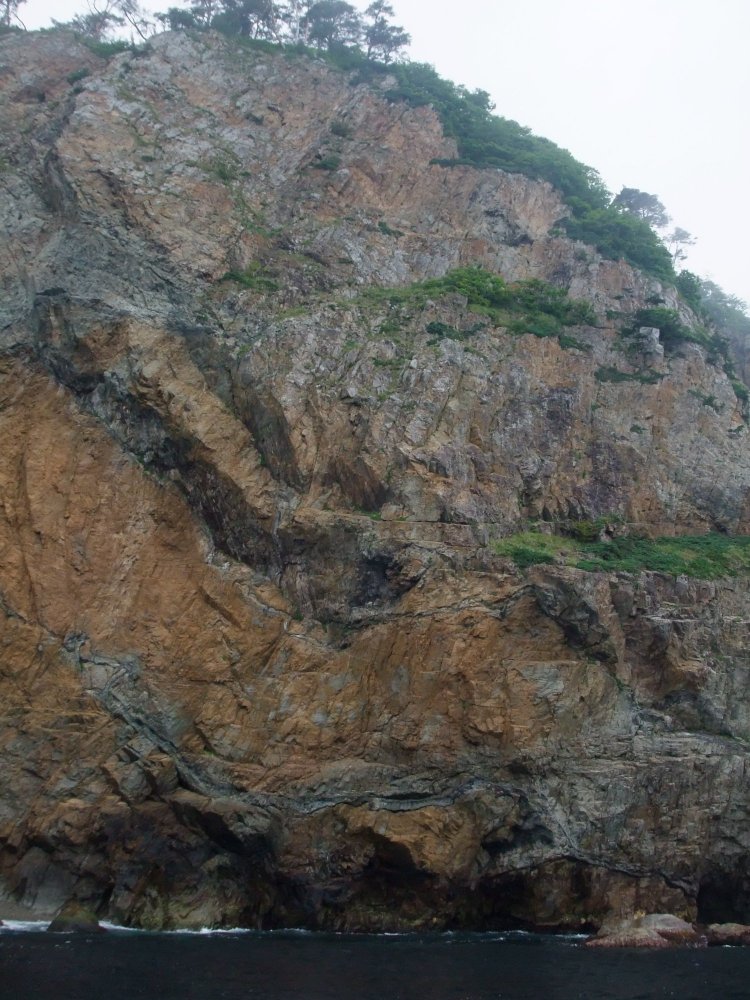
The rugged cliffs off Kitayamazaki on the Sanriku Coast
We visited the Sanriku coast in July 2014,
most affected by the Tsunami catastrophe. Three years from the Tsunami, we had learnt that the restoration of the
area was progressing, but that many had left the area to move inland, hindering
recovery. The number of travelers had gone down,
mostly because it had taken time for the hotels to reopen and, perhaps even
more because many believed it was not proper to visit the area for pleasure
after such a catastrophe. We had however noticed that the area had started a campaign to invite travelers. We thought, the little we could do to help
the recovery was to visit the area.
In July 2014, we took a plane to Misawa in
Aomori Prefecture, just north of the border with Iwate Prefecture and stayed in
the nearby city, Hachinohe. From Hachinohe, we went to Kuji, to get on
the Sanriku Railway that had just resumed full service to Miyako some 44 miles
south.
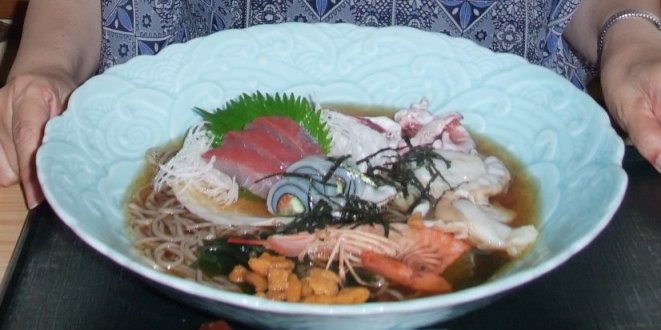
"Kaisen soba" We enjoyed all the local seafood delicacies in
one bowl in a restaurant in Kuji.
We got off at Tanohata station. The Sanriku coast is renown because of its beauty with many bays and rugged
cliffs. The problem is that Tsunamis will come into the bay and travel up to the
seaside villages. . We were greeted at the station by a
volunteer guide who took us up the hill in front of the station to explain to
us, how far the water had travelled through the village. There was a hotel by the coast called
Raga-so, that was the main tourist lodging place as well as the largest
employer in the village. Raga-so has since reopened. Ifll cover the
hotel in Iwate (Part2). We resumed our travel by Sanriku Railway to
Miyako city, the largest city in the middle of the Sanriku coast, where we
stayed for two nights.
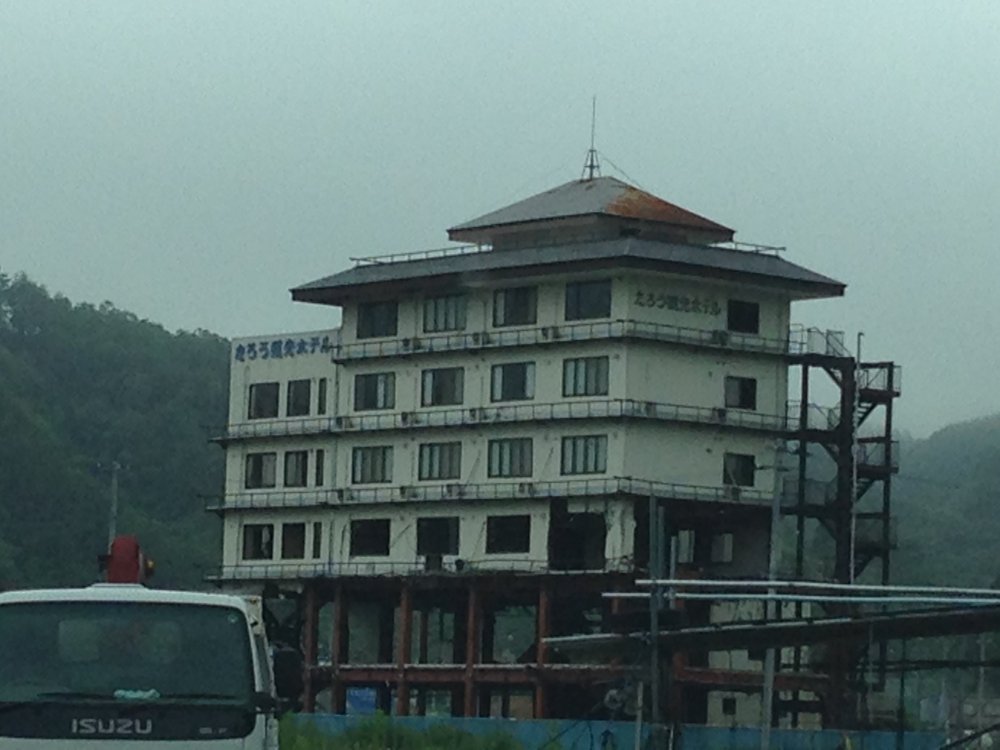
Taro Kankou Hotel in July 2014. The hotel is to be preserved as a remembrance
of the catastrophe
The following morning, we drove north to
Taro village, about 15 kilometres north of Miyako city central. Taro has had many Tsunami disasters in its
history, most recently in 1896 and 1933 before the Tohoku Tsunami in 2011. A massive tide barrier 10 meters high and 2.4 kilometers long had been
erected, protecting the village. But the Tohoku Tsunami had destroyed part
of the barrier and went over the 10 meter wall. From Taro, we drove south, through Miyako
city, to Yamada town and Ohtsuchi town. We noticed in both towns that the clearing
of the debris was over, temporary housing for those waiting for their land to
be reinforced, elevated and houses rebuilt had been arranged. In the shopping district, temporary
facilities for shops and restaurants had been developed. We got the impression that although
recovery was on the way, the process was taking much longer than we had
imagined. Many of their former customers had
evacuated to inland cities, which was a concern for the shopkeepers that had
reopened in the area. We had lunch in a restaurant in Yamada
town.
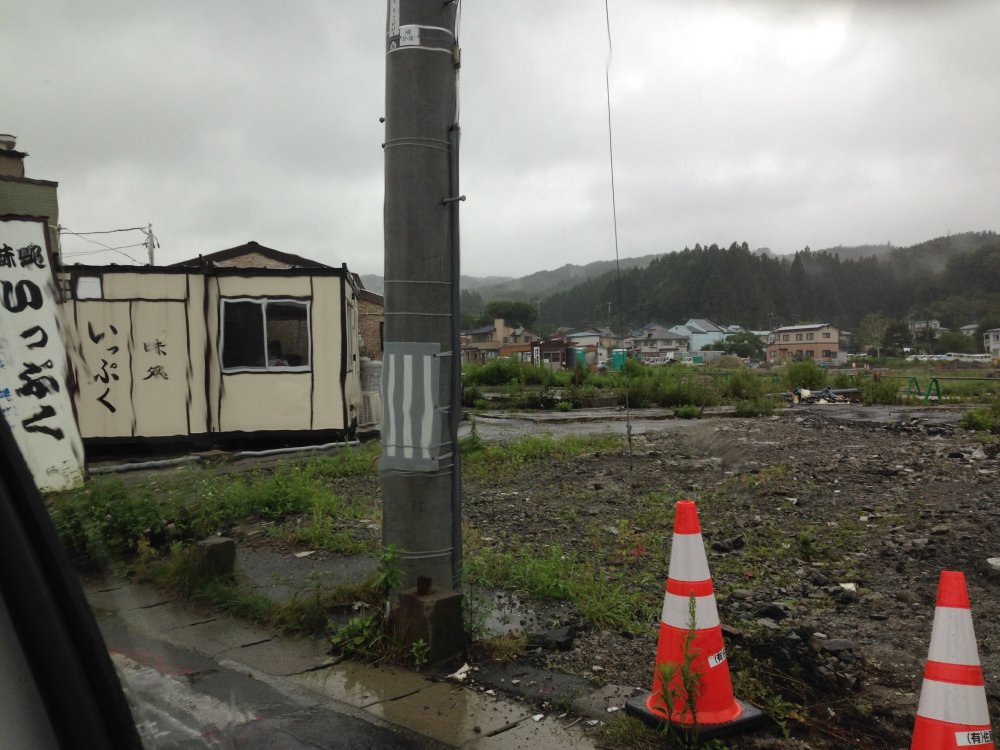
Restaurant Ippuku in temporary facility at Yamadamachi. This area was a busy shopping district before the tsunami.
Before we left Miyako, I had to go search
for some local sake.
The brew master of Sake is called Toji. There are some renowned areas where these
Toji come from. Iwate, in the Tokugawa Shogun era was
governed by the Nanbu family feudal lords, and their domain was called
Nanbu-han, which basically covered what is now Iwate prefecture. Nanbu Toji is one of the renowned Toji,
which usually is a family tradition.So it is no wonder that I set myself the task to try some local Sake. I visited the central market in Miyako and found a Sake merchant. I asked
him to make some recommendation. He recommended Senryou Otokoyama, from
a brewery in the city.
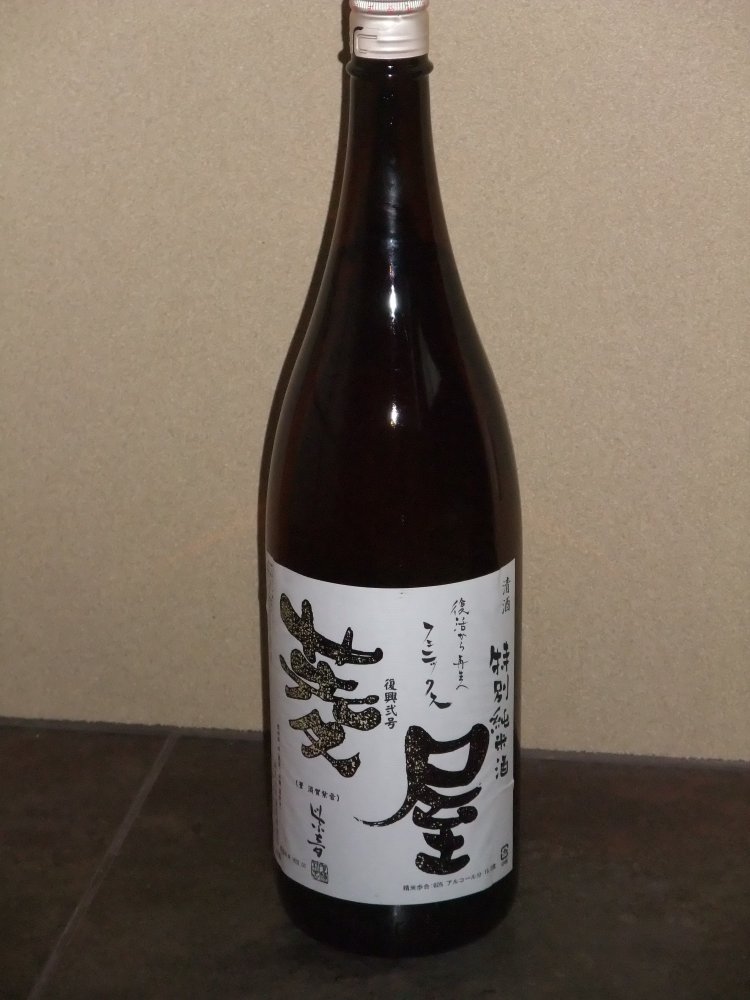 Phoenix special junmai from Hishiya brewery in Miyako city. The label says
"from recovery to turnaround".
Phoenix special junmai from Hishiya brewery in Miyako city. The label says
"from recovery to turnaround".
One thing you need to remember about Sake, is that even if you select a brand, there will be various types and grades they produce. Daiginjo is the most expensive, and you could easily be paying $100 for
an 1.8 litre bottle. It is expensive as more than 50% of the material rice
has been polished off, and the resulting Sake must display a distinct fruity
aroma when you taste it in your mouth. Ginjo is less expensive than Daiginjo (which means special Ginjo) and
more than 40% of the rice must be polished off. Junmai is made of rice only. It does not
matter to what extent the rice has been polished. Honjozo has less than 10% added distilled alchohol. Futsuushu is standard Sake.
Then, it comes in different size of
bottles. The traditional volume is 1.8 litres and is
called an Isshou(1 shou) bottle. A smaller volume, you normally get served
at restaurants is 180 milliliters (ichigou or 1 gou) one tenth of 1 shou. Sake is sold in volumes of 1 shou, 4
gous(720 milliliters), 300 milliliters and 180 milliliters.
There are some cues to get the best
bargain. Buy a 180 milliliter bottle of futsuushu and try it. That is the standard type most sold in the
community and test whether you like it or not. Logic suggests that if what they
are selling the most is of poor quality, it wouldnft make sense to purchase a
premium brand from the same brewery. If you donft have the time to take that
step, try the Honjozo. Because of the added distilled alcohol it is drier and
easier to drink. It is also usually priced modestly. If you prefer richer Sake, then purchase
the Junmai. In all cases, you should drink it cold, or
even better slightly chilled. Drinking Sake warm is popular, but one needs
to understand that that was the best way to consume Sake after WWII, as the
quality of Sake was so poor and a lot of sugar was added to make it better to
taste. That was the reason it was more popular to warm, otherwise it would have
been less appealing. I do add that the quality of Sake has much improved since
then, but therefs no disguise if itfs good when unwarmed. I finally settled on this occasion with a special Junmai Phoenix from Senryou
Otokoyama. The brewery was severely affected by the tsunami, and the name
of this special brand Phoenix was to commemorate the reopening of the brewery
as well as to demonstrate the resilience of the Sanriku area.
back to top page







